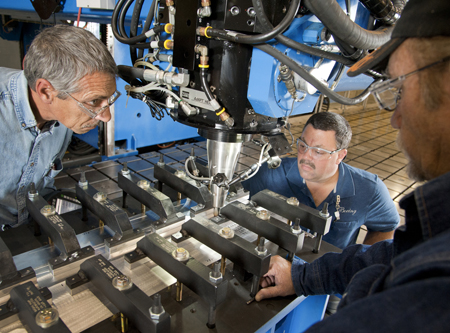Boeing Completes Preliminary Design Review for Space Launch System Core Stage

NASA Michoud Assembly Facility, New Orleans Louisiana. Boeing Space Launch Systems Program. POC – Patti Soloveichik.
Boeing and NASA on Dec. 20 completed the Preliminary Design Review (PDR) for the Space Launch System (SLS) core stage and avionics, validating the design of the rocket that will send humans beyond low Earth orbit to places like the moon, an asteroid and ultimately Mars.
The PDR is a comprehensive review that demonstrates that the design meets all system requirements within acceptable risk constraints, establishing approval for proceeding with detailed design. The first mission in 2017 will be an un-crewed loop around Earth’s moon, to be followed by a crewed mission.
“Design reuse and concurrent design and production planning helped us to quickly create a core stage preliminary design that integrates heritage and new designs, all less than a year from contract award. This is an important element of our schedule management approach,” said Jim Chilton, vice president for Boeing Exploration Launch Systems.
Boeing and NASA achieved three important milestones in the past year — System Requirements Review, Systems Design Review and now PDR. Boeing can now proceed to the Critical Design Review, the final step — expected in 2014 — that officially gives Boeing the authority to proceed into production. Boeing continues to develop production capability for the heavy-lift rocket at NASA’s Michoud Assembly Facility in New Orleans.
“We are running ahead of schedule and we will use the extra time to ensure a safe and affordable rocket,” said Frank McCall, Boeing SLS deputy program manager.
The SLS program employs a growing Boeing Space Exploration workforce in Huntsville, Ala., and New Orleans, as well as in Houston; Huntington Beach and El Segundo, Calif.; Cleveland, Ohio; and Titusville, Fla.
